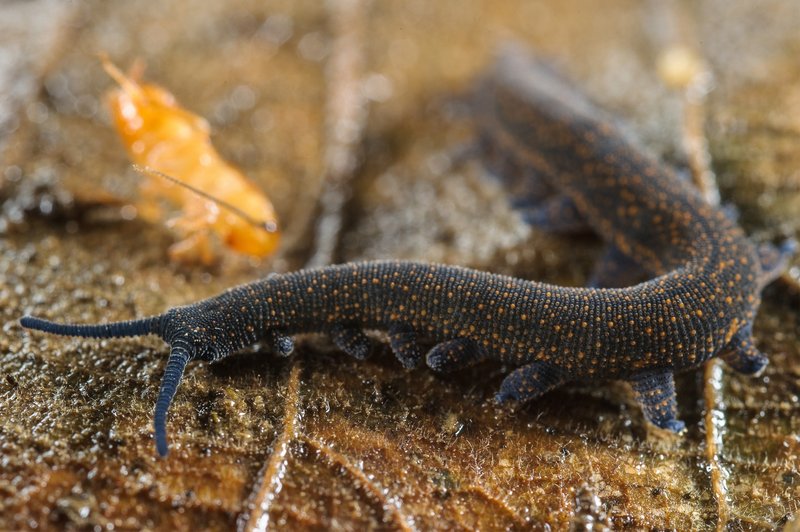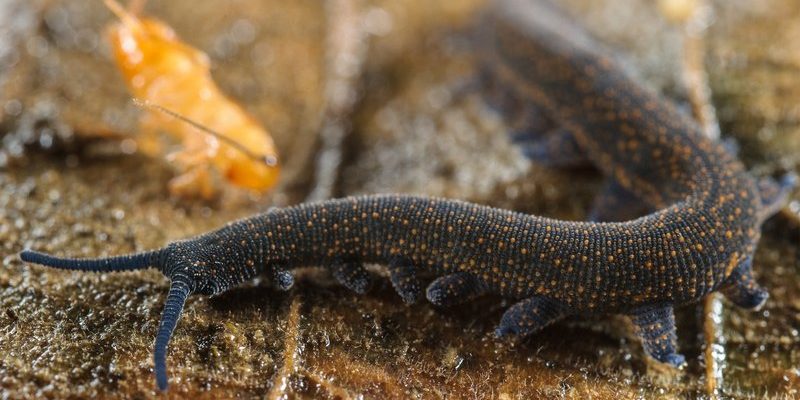
You might not have heard much about velvet worms before, or maybe you’ve seen them in nature documentaries. They belong to a group called Onychophora and are known for their flexible bodies and numerous tiny legs. But what makes them stand out even more is their unique hunting technique. Using slime jets to capture prey might sound like something out of a fantasy novel, but it’s very real and incredibly effective. Let’s unpack how these little predators work their magic with a touch of slime.
What Are Velvet Worms?
Velvet worms are *fascinating creatures* that have been around for millions of years, giving them a sort of “living fossil” status. These soft-bodied animals, with a velvety texture (hence the name), can grow up to 10 centimeters long. They have 13 to 43 pairs of legs that give them a unique way of moving, kind of like a cross between a worm and a caterpillar. They’re mostly found in tropical regions, living in moist leaf litter or underneath rotting logs.
You might be surprised to learn that velvet worms are more related to *arthropods*—like insects and spiders—than to worms. They have a mouth that looks like it belongs on a tiny monster, with sharp jaws used to bite and hold onto their prey. This combination of characteristics makes them incredibly interesting for scientists and nature lovers alike.
A fun fact about velvet worms: they can actually “breathe” through tiny holes in their skin! This makes them quite different from many other creatures out there, as they don’t rely solely on lungs. It’s just one of the many quirks that make them truly special.
How Do Velvet Worms Hunt?
Hunting for velvet worms is all about using their slime jets effectively. When they spot a potential meal—usually small insects or other soft-bodied creatures—they don’t just pounce. Instead, they shoot out a sticky, gooey spray of slime. This slime acts like a web, catching the unsuspecting prey before it even realizes what happened.
Here’s the thing: the slime isn’t just any ordinary goo. It’s designed to *slow down and trap* their prey. The viscosity of the slime allows it to stick and wrap around the victim, making it impossible to escape. You might picture it like a superhero using web-slinging powers to capture a villain. In this case, the velvet worm is the hero—and dinner is the villain!
Once the prey is caught, the velvet worm uses its sharp jaws to bite into it. They inject a special saliva that helps break down the insides of the prey, almost like a natural blender. This not only makes it easier to consume but also quickly neutralizes any defenses the prey might have. It’s a pretty efficient way to eat!
The Mechanics of the Slime Jets
Now, you might be wondering how exactly velvet worms manage to shoot slime. It all starts with special glands within their bodies. When they decide it’s time to hunt, these glands produce a thick, viscous slime. The slime is stored in tubes that run along the sides of their bodies.
When a velvet worm wants to fire this slime, it contracts its muscles, pushing the slime out through openings near its head. Imagine pulling the trigger on a squirt gun, but instead of plain water, it’s a sticky, stretchy substance. This mechanism is incredibly efficient, allowing them to accurately hit their targets even from a distance of several centimeters.
Interestingly, the jets can be adjusted in terms of how much slime is deployed, and how far it travels. This means that each shot can be customized for the specific situation, making velvet worms versatile hunters. It’s not just about having the right tools but knowing how to use them effectively.
Why Hunting with Slime Jets Matters
Hunting with slime jets offers velvet worms several advantages in their environments. First and foremost, it provides a way to catch quick-moving prey without needing to chase after them. This not only saves energy but also increases their chances of a successful meal. Think about it: in the wild, saving energy can be just as crucial as being fast.
Another essential reason this hunting method matters is the stealth factor. By shooting slime, velvet worms can often ensnare prey without being seen. This is especially critical since many of their potential meals can be easily startled. When a velvet worm remains hidden and uses its slime jets, it enhances its chances of getting dinner while avoiding becoming dinner itself.
Moreover, this unique hunting technique highlights the incredible diversity of survival strategies in the animal kingdom. Each creature has evolved in specific ways to adapt to its environment, and velvet worms set themselves apart with their slime-based approach. Learning about how they hunt not only sheds light on their biology but also inspires deeper appreciation for the complexity and wonder of nature.
The Role of Velvet Worms in Their Ecosystem
Velvet worms play an important role in their ecosystems. As predators, they help control populations of other small insects. This form of natural pest control is crucial for maintaining balance in the ecosystem. By keeping insect populations in check, they contribute to the health of their habitats.
Additionally, velvet worms serve as a food source for various birds and larger predators. Their unique hunting method and physical adaptations make them a fascinating subject for studying predator-prey relationships in nature. This interaction between different species illustrates how life continually finds a way to adapt and thrive.
By understanding velvet worms and their place within the ecosystem, we gain insight into the intricate connections between different species. These connections are vital for biodiversity and the overall health of our planet’s environments.
Conservation and the Future of Velvet Worms
As tucked away and unique as they are, velvet worms face threats from habitat destruction and climate change. Many species are sensitive to changes in their environment, particularly since they require moist habitats to survive. This makes them vulnerable to shifts in climate and land use, which can significantly impact their populations.
Conservation efforts are essential to ensure that velvet worms and their habitats are protected. By raising awareness about these extraordinary creatures and their ecological roles, we can promote sustainable practices that help preserve their homes. Supporting conservation initiatives and educating others about the importance of biodiversity can make a significant difference.
In the end, keeping velvet worms safe means keeping the balance of their ecosystems intact. It’s a fascinating reminder that even the smallest creatures have big roles in the circle of life.
Closing Thoughts
Velvet worms may seem like an oddity, but their hunting technique using slime jets showcases the amazing adaptability of living creatures. From their unique biology to their role in ecosystems, these enchanting little beings remind us of the wonders of nature. Next time you think about hunting strategies in the animal kingdom, remember the velvet worm and its remarkable ability to snag prey with a little bit of slime. They might not be the biggest or the loudest creatures out there, but in their leafy, damp habitats, they are certainly some of the most fascinating. So, next time someone mentions velvet worms, you’ll be ready to share some cool facts about how they hunt with their incredible slime jets!

